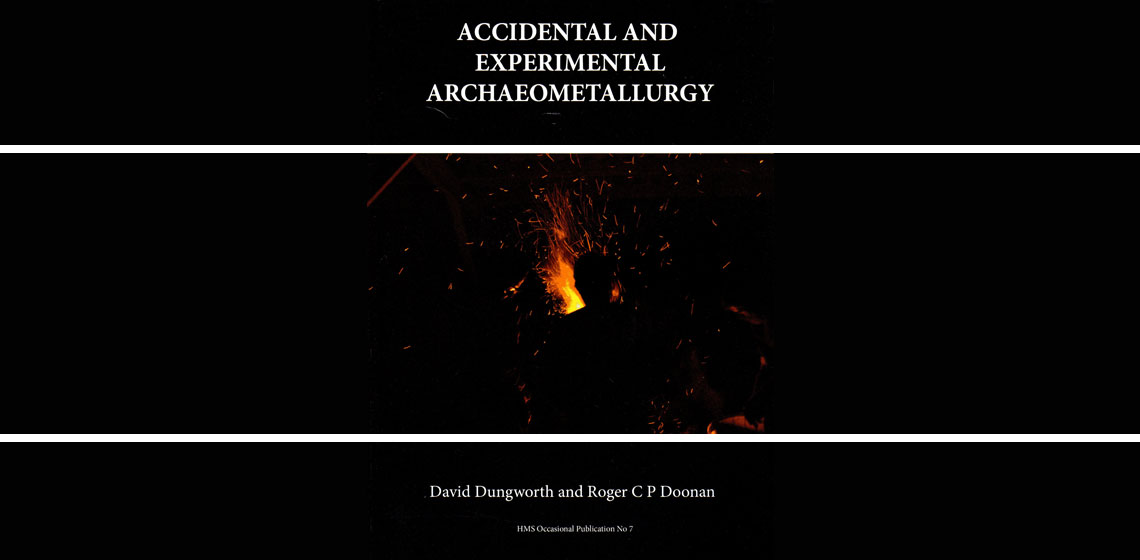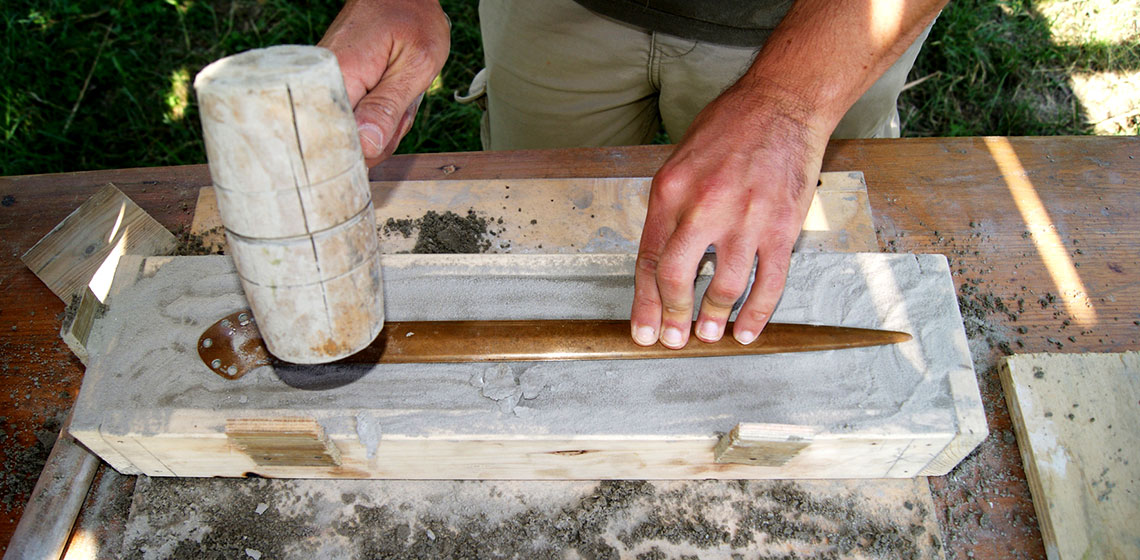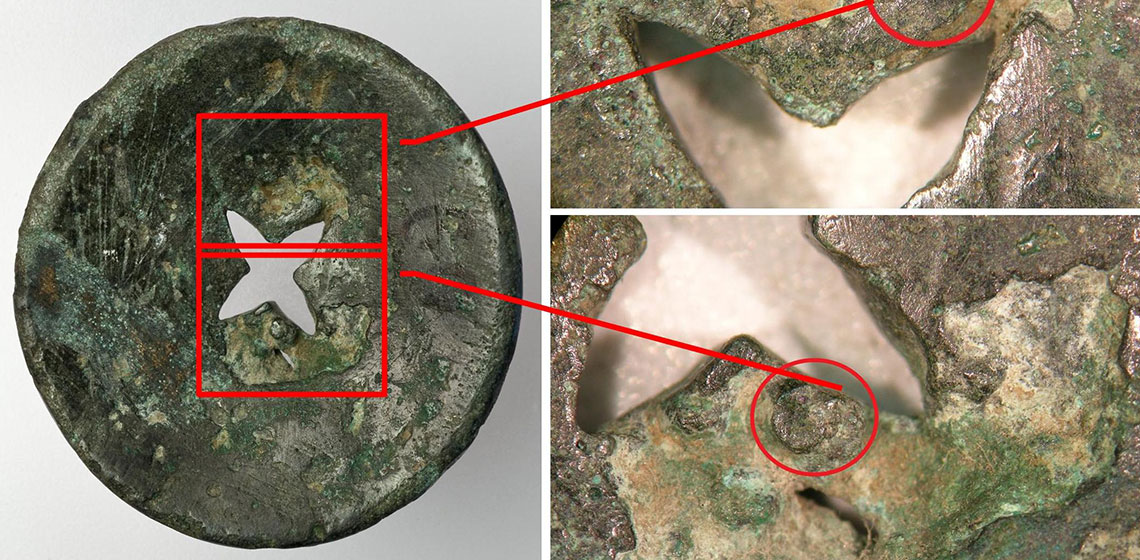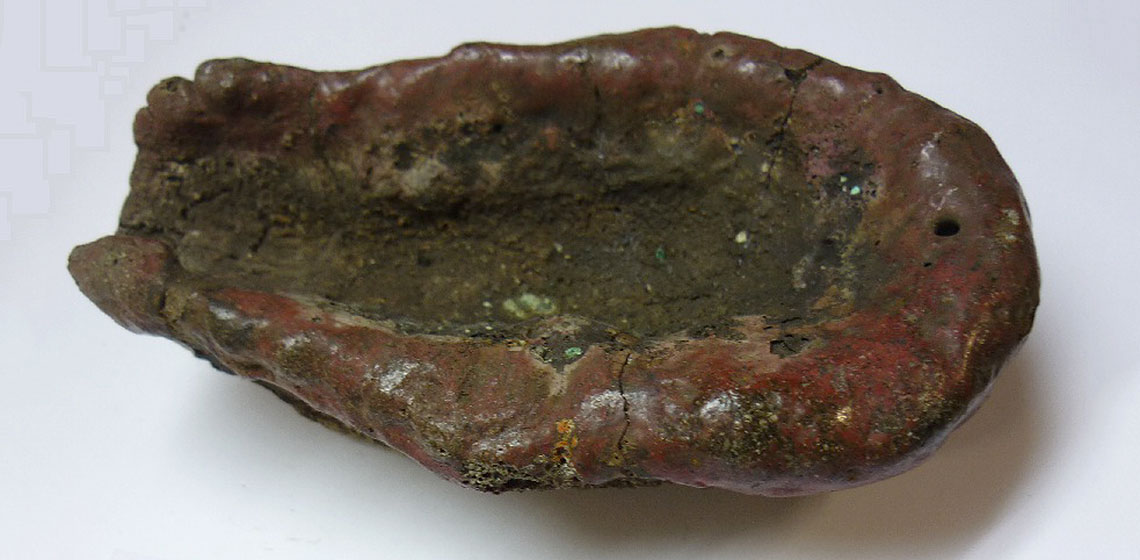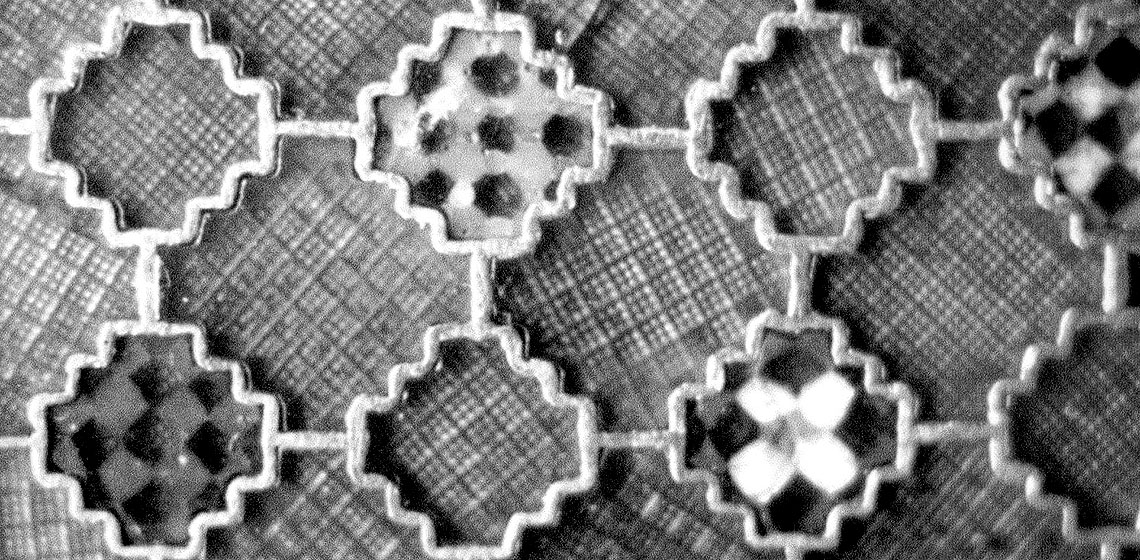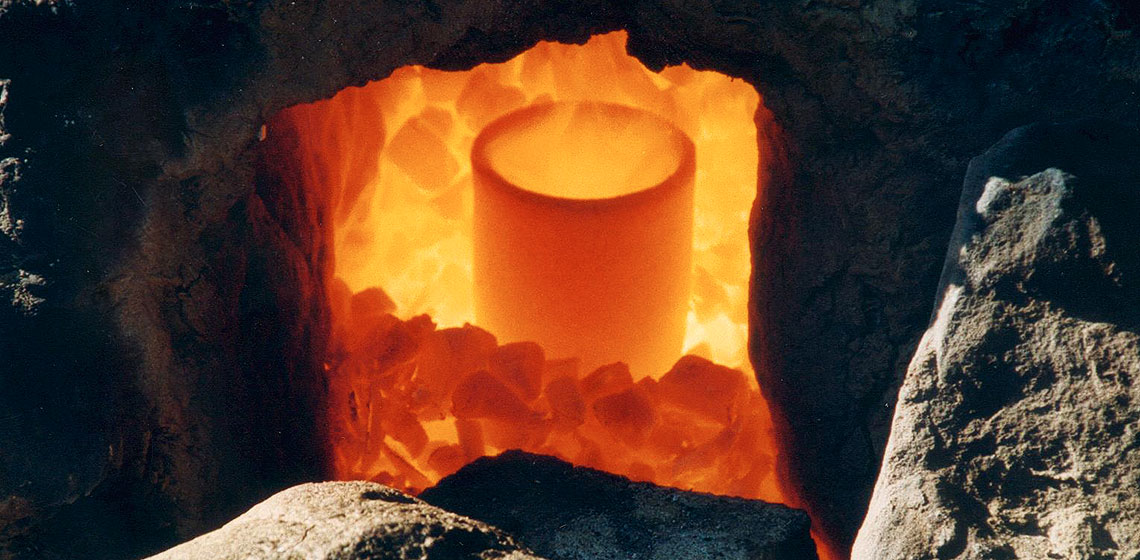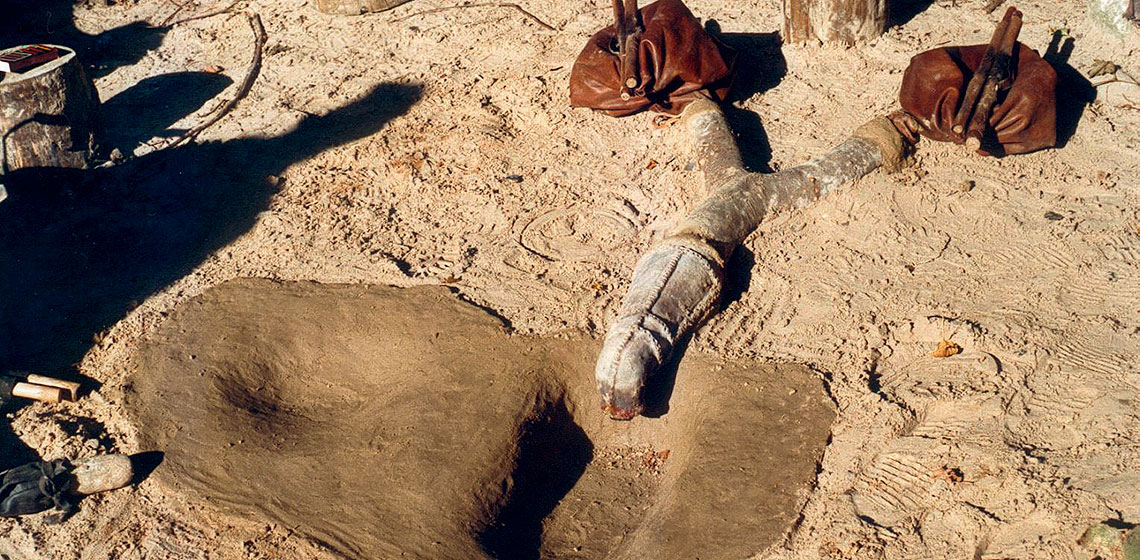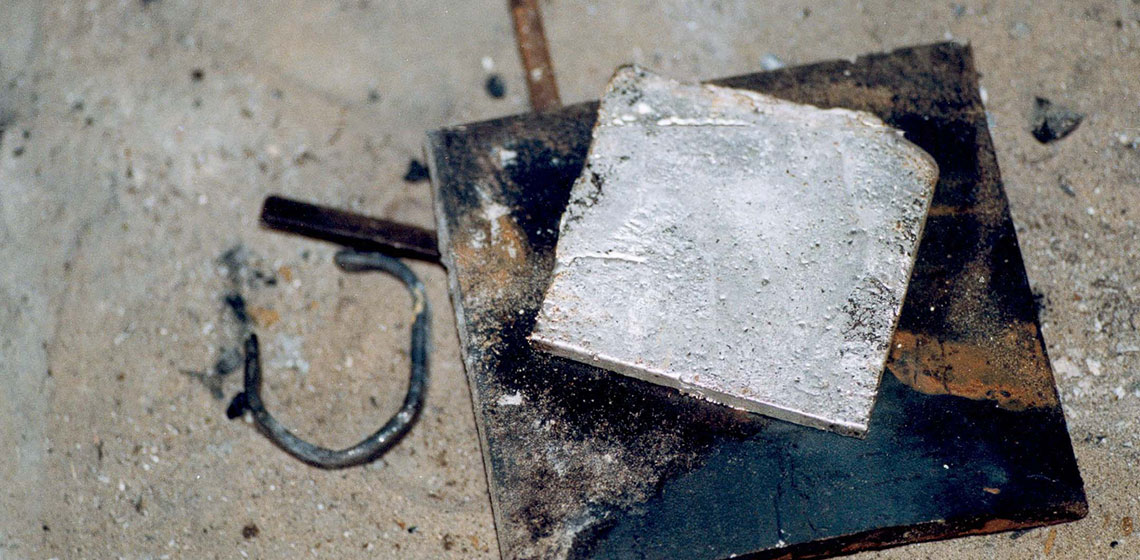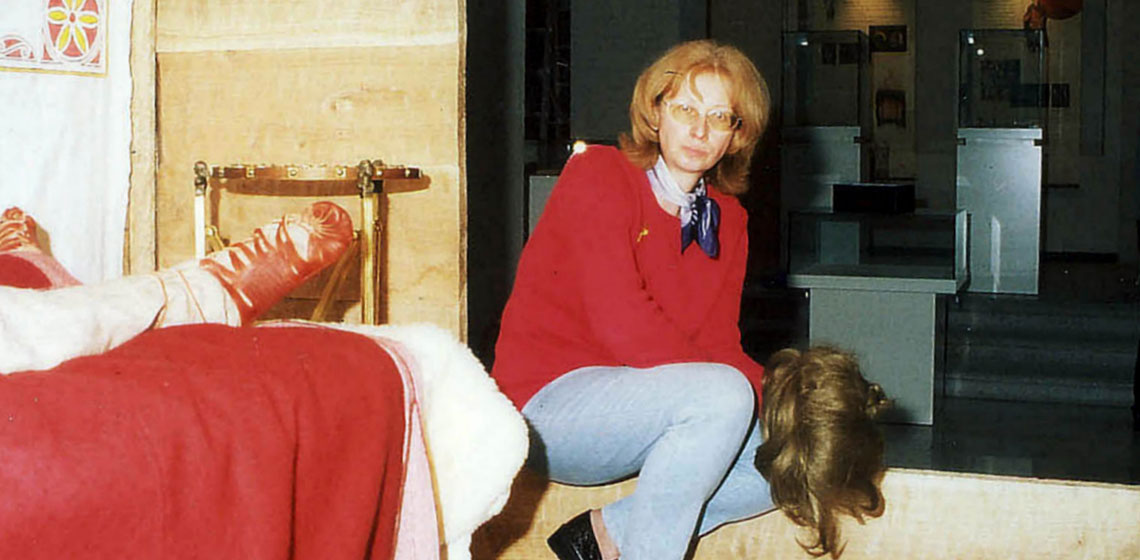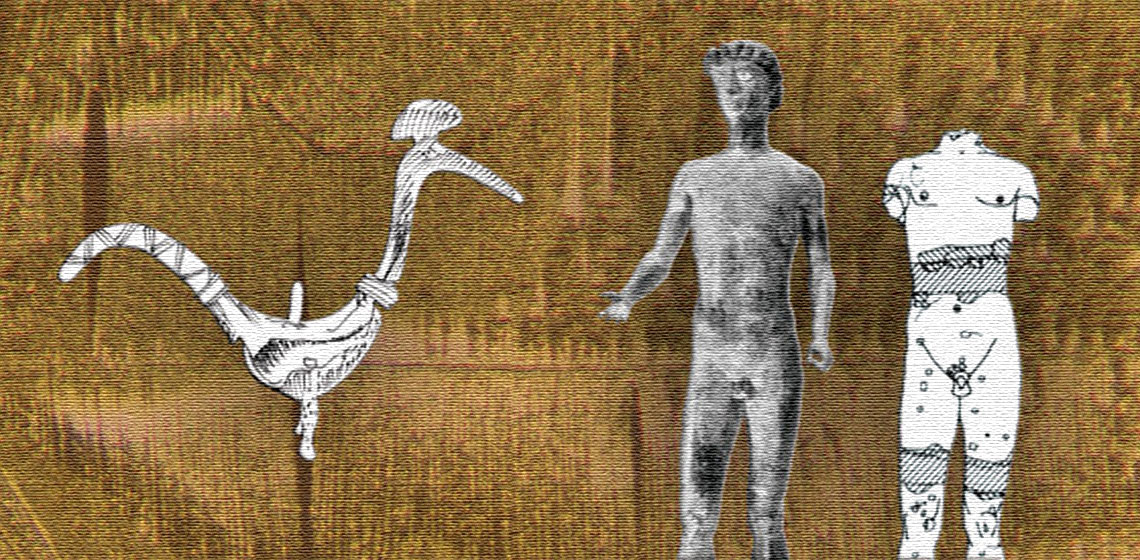casting
Book Review: Accidental and Experimental Archaeometallurgy by D. Dungworth and R. Doonan (Eds)
Publication Date
Spawned from an HMS (Historical Metallurgy Society) conference at West Dean College in 2010, this book is a unique compilation of papers written by both academics and craftsmen. Further articles not directly drawn from the conference have been included and cover non-ferrous experiments and an ethnographic study of blacksmithing...
Observations on Italian Bronze Age Sword Production: The Archaeological Record and Experimental Archaeology
Publication Date
7th UK EA Conference Cardiff 2013
***In spite of the very large quantity of Bronze Age swords in Northern Italy, only a few stone moulds have been found. Tests have shown that carving such big stone moulds (more than 60 cm long) requires a large amount of raw material, deep knowledge and skill, rather than a wide set of implements...
***In spite of the very large quantity of Bronze Age swords in Northern Italy, only a few stone moulds have been found. Tests have shown that carving such big stone moulds (more than 60 cm long) requires a large amount of raw material, deep knowledge and skill, rather than a wide set of implements...
From Wax to Metal: An Experimental Approach to the Chaîne Opératoire of the Bronze Disk from Urdiñeira
Publication Date
7th UK EA Conference Cardiff 2013
***The so-called ‘Treasure of A Urdiñeira‘ (A Gudiña, south-east of the province of Ourense, Spain) consists of an assemblage of three metal artefacts: two gold bracelets and a bronze button or disk, dated from the transition between the Late Bronze Age and the Early Iron Age...
***The so-called ‘Treasure of A Urdiñeira‘ (A Gudiña, south-east of the province of Ourense, Spain) consists of an assemblage of three metal artefacts: two gold bracelets and a bronze button or disk, dated from the transition between the Late Bronze Age and the Early Iron Age...
The Quality of the Craft
Publication Date
In this study the sustainability of crucibles used during the Scandinavian Bronze Age is tested. Due to the crucible’s high or low sustainability the idea of it being a disposable object may be ratified or discarded. Earlier experiments focusing on the casting process in Scandinavian Bronze Age have concluded that crucibles such as the ones used during Bronze Age were disposable objects due...
Precision Lost Wax Casting
Publication Date
1999 Wilhelminaoord Workshop
***The limits of precision casting were explored experimentally at the Bronze Casting Workshop at Wilhelminaoord, the Netherlands, by making wax models, moulds and lost wax castings using essentially early metalworking conditions. Geometrically patterned models of Dark Age type dies were used to...
***The limits of precision casting were explored experimentally at the Bronze Casting Workshop at Wilhelminaoord, the Netherlands, by making wax models, moulds and lost wax castings using essentially early metalworking conditions. Geometrically patterned models of Dark Age type dies were used to...
The Experimental Reconstruction in Bronze of a Merovingian Treasure Box from Sixth Century A.D.
Publication Date
1999 Wilhelminaoord Workshop
***Considerations about a lost ancient fabrication technique of bronze attachements from a merowingian treasure box pointed out that practical experiments had to be done to reconstruct the cast and coldwork. A self made oven and mould sould help to...
***Considerations about a lost ancient fabrication technique of bronze attachements from a merowingian treasure box pointed out that practical experiments had to be done to reconstruct the cast and coldwork. A self made oven and mould sould help to...
From the Object to the Mould: Is there a Connection between Microstructure of a Cast Bronze Object and its Mould Material Used?
Publication Date
1999 Wilhelminaoord Workshop
***The question studied within the framework of the Wilhelminaoord Workshop was: In which way the mould material does influence the cast structure of a bronze object? For this, casts in two different mould materials...
***The question studied within the framework of the Wilhelminaoord Workshop was: In which way the mould material does influence the cast structure of a bronze object? For this, casts in two different mould materials...
Producing Silver Sheet According to Cellini
Publication Date
1999 Wilhelminaoord Workshop
***During a short internship in The Hagues Municipal Museum, I noticed some blisters in a seventeenth century V.O.C.-dish. I thought they were gas bubbles which might have been introduced in the material during coagulation. When hammering to sheet the bubbles would take the shape of blisters which would turn visible during annealing. Why, however, were these shapes not visible on many other pieces?
***During a short internship in The Hagues Municipal Museum, I noticed some blisters in a seventeenth century V.O.C.-dish. I thought they were gas bubbles which might have been introduced in the material during coagulation. When hammering to sheet the bubbles would take the shape of blisters which would turn visible during annealing. Why, however, were these shapes not visible on many other pieces?
Interview: Dr Rosemarie Leineweber
Publication Date
Dr Leineweber (1951) has an impressive track record in German experimental archaeology, reaching over two decades back. She worked with metals, cremation experiments and much more, with museum colleagues, university students and researchers and inspiring many people in how to experiment in a way which is not only fun, but brings progress...
Ancient Repairs on Bronze Objects
Publication Date
1999 Wilhelminaoord Workshop
***Bronze objects can be damaged in many ways, for example during casting or during their time of use. Often this damage was repaired using various techniques. In this paper, some examples of ancient repairs and their techniques are described and illustrated with examples published in the literature...
***Bronze objects can be damaged in many ways, for example during casting or during their time of use. Often this damage was repaired using various techniques. In this paper, some examples of ancient repairs and their techniques are described and illustrated with examples published in the literature...

